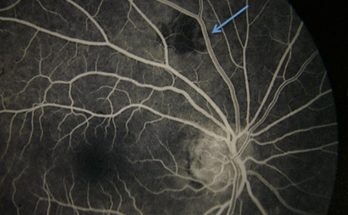The modern healthcare landscape is characterized by a significant paradox: while technology has advanced treatment options to unprecedented levels, it has simultaneously burdened practitioners with an overwhelming administrative load. Doctors, nurses, and specialists often find themselves spending hours each day on meticulous documentation and charting, time that could be dedicated to direct patient care. This administrative fatigue has become a primary contributor to professional burnout across the medical field. Fortunately, a powerful solution is emerging from the field of artificial intelligence: sophisticated AI medical scribing technology.
At the forefront of this digital transformation is a specialized platform designed to seamlessly integrate into the clinical workflow, acting as an omnipresent yet unobtrusive assistant. This advanced AI medical scribe utilizes large language models specifically trained on medical terminology and conversational patterns to convert complex patient-physician interactions into structured, compliant documentation—in real time. The ultimate goal of this innovation is simple: to shift the physician’s focus back to the patient, eliminating the distraction of constant note-taking.
The core mechanism of this system centers around its ability to process live, naturalistic conversations. When a clinician begins a consultation, the system actively listens, capturing every diagnostic detail, treatment plan, and patient concern. Unlike traditional methods, where a physician might interrupt the flow of dialogue to jot down notes or where a human scribe might miss subtle nuances, the medical scribe AI captures the entirety of the exchange. This comprehensive capture leads directly to more accurate and detailed patient records, ensuring nothing vital is overlooked.
The immediate output of this process is typically a well-organized clinical note, frequently formatted as a standard SOAP (Subjective, Objective, Assessment, Plan) note, ready for direct copy-pasting into the Electronic Medical Record (EMR) system. This critical capability drastically reduces the time a doctor spends post-encounter typing up or refining charts. In fact, early adopters of this technology have reported phenomenal efficiency gains, with some saving up to 60-70% of their daily charting time—translating to several hours of administrative work regained each week. This reclaimed time allows practitioners to manage more patients, dedicate more energy to complex cases, or simply achieve a healthier work-life balance through optimized workflow.
The functionality of this medical transcription software goes significantly beyond mere word-for-word audio-to-text conversion. True AI scribing involves sophisticated interpretation and context application. The system can differentiate between the doctor’s clinical statements and the patient’s self-reported history, summarize lengthy discussions into concise clinical abstracts, and accurately tag all relevant medical terms, symptoms, and diagnoses. This level of precision is critical not only for continuity of care between providers but also for essential billing and compliance purposes. Reducing documentation errors and enhancing data accuracy are key benefits that directly impact the financial and legal health of any medical practice.
Furthermore, privacy and security are paramount in the development of such tools. Any credible provider of ai medical transcription must adhere rigorously to established international standards and regional regulations, such as HIPAA. This adherence involves employing robust encryption, implementing strict de-identification measures, and using secure authentication protocols to ensure patient confidentiality and data integrity are maintained at the highest level. The platform is engineered to manage and then securely purge data within defined regulatory timelines, ensuring full compliance without sacrificing functionality.
The versatility of this technology is another compelling feature. Whether a general practitioner requires a straightforward progress note, a pediatrician needs detailed family history, or a specialized surgeon must document complex surgical planning, the system can be tailored. Users can adapt templates and workflows to suit their specific specialty and practice needs, making the documentation process personalized and highly efficient. The application is also device-agnostic, supporting use on smartphones, tablets, and desktop computers, providing flexibility for clinicians working in various settings—from the examination room to the operating theatre or during remote telehealth sessions.
In summary, the transition from laborious manual charting to intelligent ai medical scribing marks a transformative leap for modern healthcare. By automating the arduous, time-consuming task of documentation, this powerful medical scribe AI empowers doctors to fully engage with their patients, fostering stronger therapeutic relationships and ultimately improving diagnostic accuracy. It is a premier example of how artificial intelligence is being strategically harnessed not to replace human judgment, but to fundamentally augment human capability, making healthcare delivery more efficient, precise, and primarily focused on providing quality care. This revolutionary approach to clinical documentation is rapidly setting a new standard for the practice of medicine worldwide.




